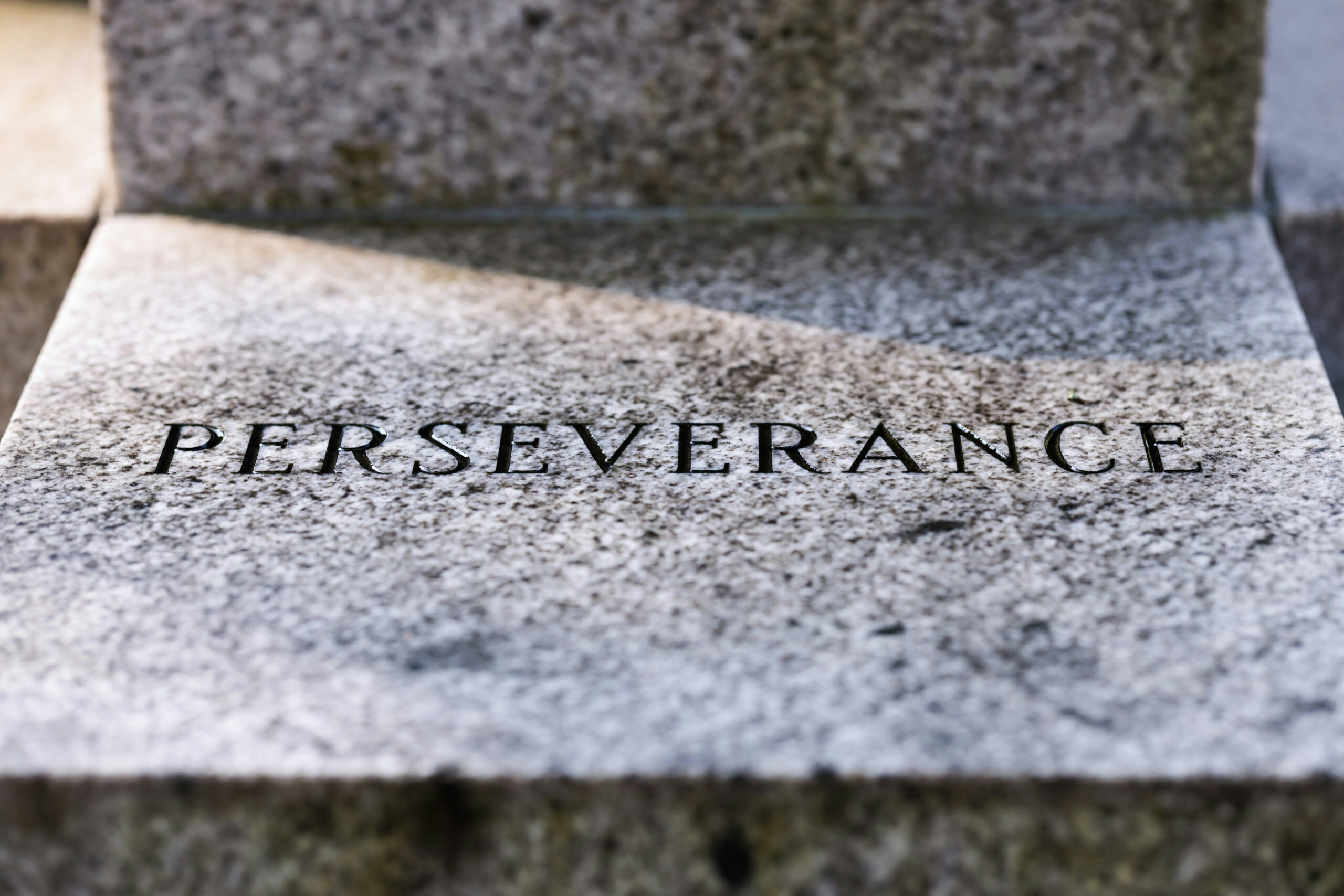Statement for the Record by the Bush Institute’s Jason Galui on Maximizing Veterans’ Success After Services
Chairman Moran, Ranking Member Blumenthal, and Members of the Committee, thank you for the opportunity to testify on behalf of the George W. Bush Institute, where we combine ideas and action to ensure opportunity for all, strengthen democracy, and advance free societies while remaining grounded in the timeless values of freedom, opportunity, accountability, and compassion.
We believe that the nation has a duty to help make the military-to-civilian transition as successful as possible for veterans and their families. Our Veterans and Military Families (VMF) team’s main objective is to empower veterans and their families to thrive in their civilian lives, so that – in the words of President George W. Bush – “we can unleash the potential of a generation of resourceful, determined, and experienced leaders.”
General Dwight D. Eisenhower, as he approached retirement from the United States Army, wrote that he “faced a monumental career choice with absolutely no experience in making career choices.” If soon-to-be President Eisenhower was concerned about his transition, then we must expect that many transitioning service members will be anxious about theirs. General Eisenhower certainly achieved sustained success post-transition by discovering ways to continue his service beyond the uniform.
Many service members find great meaning in a purpose higher than self as they serve the country through the U.S. Armed Forces. Upon transition from the military, it can feel as if such purpose is lost or stripped away, though a veteran’s service to country need not end after the military. Their service simply transforms. Recognizing such transformation is key to successful transition.
Many of America’s veterans are leaders people trust, and many more have tremendous potential to lead in their civilian lives. A willingness to sacrifice personal comfort for others is strong evidence of leadership potential. For more than 50 years, individuals of varying beliefs and backgrounds from all states and territories have joined an all-volunteer force to provide for the common defense. When we combine the attributes of a veteran with those of a leader, we usually get character, competence, and commitment in our communities.
Opportunities to serve beyond the uniform, to form genuine connections, and to make meaningful contributions to one’s community are necessary components to ensure sustained success. Discovering such opportunities is less clear in civilian life than it is during military service, which can make the military-to-civilian transition challenging for many. The sooner a veteran can rediscover their purpose, connections, and contributions, the more likely it is that they and their family will thrive in civilian life.
Rediscovering Purpose, Connections, and Contributions
A successful military-to-civilian transition is hard to define because “success” can mean many things to many people. One might define success as landing a job immediately upon transition. Another might define success as retreating to a faraway place where peace and quiet dominate. Others still may define their successful transition as one in which they focus on their family members. To think about a successful military-to-civilian transition, we need to return to the beginning of one’s military career. In fact, the Bush Institute believes transition begins at accession, for transition is an ongoing process throughout a human’s life.
If anyone were to ask a military service member why they volunteered for the U.S. Armed Forces, the general response from each service member likely would contain a unique combination of four common themes: purpose, opportunity, variety, and stability. Life in the U.S. military consistently delivers high degrees of satisfaction across each of these themes and millions of Americans have thrived during their military service only to struggle as civilians.
When service members and their families return to civilian life – whether after three or 33 years – it can feel as if those raisons d’être were pulled out from under them. Such an immediate sense of loss can prove difficult to recover in civilian life, which can lead to retreat and isolation, and thus hinder sustained success post-transition.
Veterans and their families, like everyone else in society, thrive when they are mentally and physically healthy, are well-informed and prepared for navigating civilian opportunities, and can make meaningful contributions to their communities. Therefore, our Bush Institute veteran and military family work focuses on health and well-being, education, and employment.
Health and Well-Being: The Veteran Wellness Alliance and Check-In
Through public and private efforts, the American people have provided tremendous resources to care for and support veterans and their families. Unfortunately, bureaucratic fragmentation and complex navigation can cloud learning about and accessing these resources. Fortunately, the unique entrepreneurial spirit of the American people complements federal efforts to reintegrate veterans and their families back into American civilian society.
The Veteran Wellness Alliance (VWA) is an example of how good faith public and private sector actors can partner to achieve the best outcomes for veterans and their families. i Inspired by President George W. Bush and led by the Bush Institute, the VWA is a collaborative network of mental and brain health care clinical providers and veteran peer networks that tackles the effects of the invisible wounds of warii. The U.S. Department of Veterans Affairs (VA) has been a key member of the VWA since the creation of the alliance, and its representatives have consistently provided the alliance invaluable perspectives and insights across the range of veteran wellness issues. Many of the VWA’s clinical providers and veteran peer networks work closely with public partners through their various state-level and medical research university relationships.
In 2021, the VWA launched Check-In (www.veterancheckin.org), an innovative solution that connects veterans, service members, and their families, caregivers, and survivors to high-quality mental and brain health careiii. Regardless of service era and regardless of characterization of service discharge, Check-In connects those needing or wanting support for post-traumatic stress, anxiety, depression, substance abuse, and mild traumatic brain injury to the nation’s best clinical providers of that care.
The novelty of Check-In was its creation of a trusted online “easy button” that the VWA veteran peer networks could provide to their members who were wanting or needing mental or brain health care. Leveraging the power of innovation and technology, Check-In solved the navigational and bureaucratic challenges associated with searching for and connecting with the right type of care.
Within 72 hours of connecting through Check-In, an individual seeking care will talk with one of two women who are licensed clinical social workers, one of whom is the spouse of a veteran and the other a veteran herself and married to a veteran. Following their noninvasive conversation, the Check-In Care Coordinators will then provide a warm handoff to the most appropriate VWA Clinical Provider. The Care Coordinators will also provide information on any VWA Peer Network that the individual may find of interest.
Across a four-year pilot, thanks to the generosity of the Rees-Jones Foundation, Check-In has proven not only efficient at connecting veterans,iv service members, and their families, caregivers, and survivors to mental and brain health care, but Check-In has also proven effective. To assess the effectiveness of care through Check-In, the VWA launched an Outcomes Working Group through which the VWA’s Clinical Providers shared nonidentifiable data and collaborated in unprecedented ways to show that individuals within their care are, in fact, experiencing reduced symptoms and are satisfied with the care they receive.
The Bush Institute, in a close operational partnership with Combined Arms and Wounded Warrior Project, leads Check-In while Syracuse University’s D’Aniello Institute for Veterans and Military Families evaluates Check-In. All VWA members play key roles in advancing the awareness of Check-In through their respective networks and communications efforts.
There are so many resources available to veterans and their families that it can be paralyzing to know which resource is most appropriate to address the challenge at hand. Check-In eliminates or at least reduces the possibility of such paralysis with respect to mental and brain health care. The collaborative and innovative VWA stands as a strong model for how public and private actors can partner to achieve sustained success after service for veterans and their families.
Education: Accessing Higher Education Resources
For many veterans and military-connected students, postsecondary education is a critical initial step toward thriving beyond the uniform. The Servicemen’s Readjustment Act of 1944 (the “GI Bill”), along with subsequent refinements to it, enabled millions of veterans to transform their lives and put the United States on a path to building the world’s best-educated workforce to boost American prosperity. The 21st century Post-9/11 GI Bill expanded access to higher education, leading to greater employment opportunities for veterans.
College serves not only as a place for formal learning and skill development but also serves as a low-stakes environment where veterans can readjust to civilian life while rediscovering purpose, connections, and contributions. This process of reintegration helps address some of the core reasons veterans struggle to find work that matches their skills, interests, and education. Veteran service organizations like Student Veterans of America and the National Veterans Leadership Foundation help veterans and their families thrive on college campuses.
For many veterans and military-connected students, postsecondary education is a critical bridge between military service and civilian success. Yet that bridge can be difficult to cross. Veterans face unique challenges as they adjust to new academic and social cultures, manage the psychological impacts of service, and navigate health and wellness resources.
While federal programs exist to support these needs, they are often underutilized due to limited awareness and fragmented coordination. More than 862,000 veterans used their Post-9/11 GI Bill benefits in 2023, yet many encountered barriers that made their transition harder than it needed to be. Improving coordination between federal agencies and higher education institutions would help to reduce those barriers. Veterans deserve a system that helps them not only access education benefits but also thrive once they are enrolled.
Maximizing their success does more than serve individual veterans. It strengthens the national workforce and secures our shared economic future. Every veteran who completes their education and secures meaningful work is not just fulfilling personal potential, they are actively advancing U.S. economic growth, innovation, and American global competitiveness. To fully realize this promise, we must join together – across government, academia, and industry – to ensure veterans and their families have access to the opportunities they have earned. Our commitment today determines not only their future, but also the continued strength of our nation.
In January 2025, the Bush Institute published a set of policy recommendations for the VA to assess the efficiency and effectiveness of Veterans Integration to Academic Leadership and VetSuccess on Campus, which offer resources for veterans’ health and wellness that complement federal financial benefits.
Employment: Reframing the Transition Question
It is not unreasonable to ask a transitioning service member, “What do you want to do when you get out of the military?” But that question is incomplete. What a veteran wants to do after the military might not match what the civilian world needs from the veteran.
The more complete question a veteran should ask themselves is: “What do I have that the outside world – the market – needs?” That is, what does the veteran have in their talent set – their skills, knowledge, attributes, experiences, and education – that the labor market wants. Embedded in that more complete question is the fundamental labor supply-labor demand match.
Furthermore, this question should not be posed at the end of a military career, but at the beginning. Every service member will transition back into civilian life, and the sooner one begins taking stock of how their talent set evolves during military service, the more likely a veteran and their family will enjoy sustained success after service.
About 15 years ago, according to the Bureau of Labor Statistics, the veteran unemployment rate had risen to around 12%, and for younger veterans between 18 and 24, it was nearly 29%. In response, public and private partners collaborated through a series of compacts to prioritize hiring and supporting the veteran community. Corporate America recognized an opportunity to step up and support veterans transitioning to civilian life during wartime. Those efforts worked.
Today, the veteran unemployment rate generally mirrors, and often falls below, the civilian unemployment rate. That’s a success story. A low unemployment rate, however, does not tell the full story. Nearly half of veterans leave their first job after the military within a year. While that figure is not far from that of recent college graduates, the reasons for veterans’ departures are distinct: transition difficulties, skills mismatches, and workplace culture, among others.
Adding to these challenges are rising living costs, single-income households frequently at or below the poverty line, and persistent military spouse unemployment averaging 20% over the past decade. These factors reveal that many transitioning service members, while employed, are underemployed, which the Bush Institute defines as “the condition in which a veteran’s education, leadership skills, compensation, or available time exceed what their current role requires or provides.” In other words, veterans can contribute more to our economy.
The U.S. economy does not fully employ veterans. While unemployment rates look healthy on paper, the data suggest a mismatch between veteran labor supply and civilian labor demand. Veterans are getting jobs, but not necessarily the right jobs. The result is productivity loss for the nation, increased dependence on public programs, and unnecessary strain on veterans and their families. Recognizing the intangible attributes veterans and their families bring to their communities and companies – such as integrity, respect, perseverance, loyalty, and leadership – will not only more accurately compensate veterans for their added value to the economy but will contribute to making the United States more prosperous and secure.
To confront these challenges and to identify opportunities, the Bush Institute has convened a Veteran Employment Policy Working Group of subject-matter experts from industry, academia, and former government. This group will develop actionable recommendations for federal, state, local, and private sector levels to improve the quality of employment for veterans and their families and realize their full economic potential.
Conclusion
General George Washington was clear when he said, “The willingness with which our young people are likely to serve in any war, no matter how justified, shall be directly proportional to how they perceive the veterans of earlier wars were treated and appreciated by their nation.” Maximizing sustained success for veterans and their families post-military transition is, simply put, a matter of U.S. national security.
The sustained success post-transition of our veterans and military families directly affects military readiness. When a service member’s final experience in uniform – their transition from it – is positive and enduring, then a new veteran and their family will be great ambassadors for military service and will be more likely to encourage others to serve.
While our federal and state governments have vastly improved how we care, treat, and appreciate those who choose to defend the U.S. Constitution and our way of life, significant gaps remain for a variety of reasons. Fortunately, the American people – through civil society, their entrepreneurial spirit, and a wide range of nonprofit entities – complement government efforts to increase the likelihood of sustained post-transition success for veterans and their families.






























